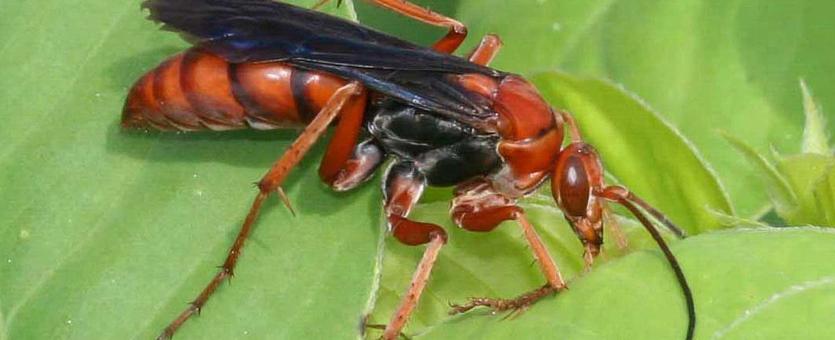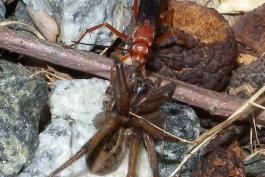
The rusty spider wasp hunts wolf spiders, usually in open areas. Specialists examine leg spines, mouthparts, foot and antennae anatomy, wing venation, and other details to determine genus and species. The rest of us make tentative IDs by looking at color patterns, basic body shape, and the spider-hunting behavior.
Similar species: In North America north of Mexico, there are only two species in genus Tachypompilus, and this is the only species found in the eastern United States. Some spider wasps in genus Poecilopompilus also have a lot of rusty color, but they are not as strongly rusty as the rusty spider wasp. Other rusty-colored wasps in our area would not be spider wasps.
Learn more about this and other spider wasps on their group page.
Habitat and Conservation
Adults are often seen taking nectar from flowers, in prairies, fields, and other open places with plenty of wildflowers.
Many people see female spider wasps as they are transporting a paralyzed spider to their nests. Females of this species create nests in rock piles or in cracks in rock walls or foundation stones, so you might see them in those specific places.
Food
The favorite prey are the rabid wolf spider (Rabidosa rabida) and the wetland giant wolf spider (Tigrosa helluo). Fishing spiders may be captured, too. The female rusty spider wasp drags the paralyzed spider backward, grasping it by its fangs or pedipalps (the fingerlike appendages next to the mouth). She inters it in her burrow and lays an egg on it. The wasp's young will hatch and eat the spider.
Adults sustain themselves with nectar from flowers, especially Queen Anne's lace, rattlesnake master, and other members of the carrot/parsley family.






























